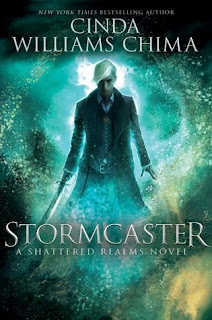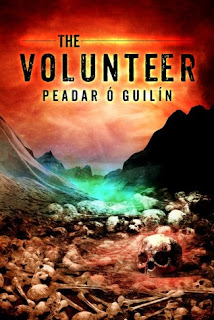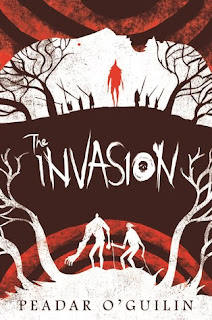Whenever I am trying to determine the translation for a plant or animal, I go through two steps: first I look the name up in the language that I know, in order to get the Latin name, usually from Wikipedia; second I look the Latin name with
site:ro in the query or whatever other language I am interested in. This way I get information about both language and the characteristics of the species. But how did we come to have this universal naming of living things and the single one used throughout the biological sciences? Even the British use it!

It's thanks to this guy called
Carl Linnaeus (or Carl von Linné or Carolus Linnæus, it was a long time ago and they were playing with names back then, heh heh), a Swedish biologist and physician. He devised around 1750 what we call the
binomial nomenclature, in which any living species name would be encoded by two Latin parts, the first, also known as the generic name, would be the genus and the second, also known as specific name, identifies the species in the genus. Now you also know how the words generic and specific came by, maybe :). To be fair, his work is based on
Gaspard Bauhin's, who lived in the 1600s. Now, the words could come from any language, you just have to spell them in Latin.
While the system is rational and helpful, there are peculiarities in it that are worth attention. For example, how come a lot of species use
vulgaris as the specific name? Because it means "common" in Latin, so for example
Beta Vulgaris is the common beet. What other specific names are there? How about species where the generic and the specific names are the same? They are called
tautonyms or, later, tautonymous names, of which some are funny enough like Gorilla gorilla gorilla (yes, three names, hold on, I'll get there). It's like saying "a man's man" :) A bonus fun thing related to this, botanical nomenclature forbids tautonymous names, defined as having identical generic and specific names. However, if you spell them differently, even if they mean the same thing, that's allowed, so you get stuff like Picea omorica, which means pine in Latin and Serbian. For zoological names, tautonyms are allowed, though.
There is more. How about the three part names? You can get stuff like "Something orother Linnaeus 1753" and "Another thing (Linnaeus 1753)". They both mean that the guy who first named the species was Linnaeus, but the second form indicates that the name has changed since first named. There are obvious reasons for that, as the taxonomy of species was first based on physical similarity, while more recently it is based on genetic similarity. One species might appear to be part of an existing genus just to find out later that its genes are of a completely different origin. Another reason for a third part of a species name is the
trinomial nomenclature, which introduces the concept of
taxon. The system is used to mean different things in botany and zoology, since it is governed by different organizations and you know, they just have to differ in opinions. How Linneaus must roll in his grave. Anyway, taxa are so vague that not even the same body of people agree on what the rules are on that.
Let's return to binomial nomenclature for a bit, though. I've stumbled upon the specific name
officinalis. Linnaeus gave the specific name "officinalis", in the 1735 (1st Edition) of his Systema Naturae, to plants (and sometimes animals) with an established medicinal, culinary, or other use. That's a very interesting category and it endures in the age of medicinal pills created in labs by big pharmaceutical companies. When you look for the name of a plant, you usually get some local name that then became the general term for that plant in a language, but when you look at the Latin name, you understand that it has medicinal or culinary properties. Funny enough, the name comes from officina, which is the name of a building attached to a monastery where the monks prepare their medicine, but in modern Italian it means workshop. Also check out this paper:
On "officinalis" the names of plants as one enduring history of therapeutic medicine.There is so much to discuss on this subject that it would make too long an entry and I lack the necessary time. Even the few tidbits of information here are taken mostly from Wikipedia. Imagine digging a little further... it's a huge rabbit hole that holds a lot of promise. If you are the kind of guy that plays
RPGs and takes a Rogue character so you can sneak past enemies and collect flora to make potions, then you should really dig in here :) Or if you are interested in the lost medicinal and culinary qualities of plants and animals. I hope this gives you a nice start for something really interesting. Last fun fact, the
winner of Wikipedia's influence list in 2014 was Carl Linnaeus. The most influential person on content in Wikipedia. Not some rock star, not an American president or British writer, but a 18 century Swedish biologist who gave us a way to name things.
 The Shattered Realms series is starting to gather momentum with Stormcaster. While Flamecaster was set mostly in the Arden empire and Shadowcaster in the Fells, Stormcaster goes everywhere, connects the characters developed in the first books and finally reveals the main villain. Unfortunately, that is all it does. Stuff happens, things are set up, people meet, then the book ends. We just have to wait for the fourth and maybe last book in the series to see how things end.
The Shattered Realms series is starting to gather momentum with Stormcaster. While Flamecaster was set mostly in the Arden empire and Shadowcaster in the Fells, Stormcaster goes everywhere, connects the characters developed in the first books and finally reveals the main villain. Unfortunately, that is all it does. Stuff happens, things are set up, people meet, then the book ends. We just have to wait for the fourth and maybe last book in the series to see how things end.



 After a period of reading only fantasy books, I've decided it was time to get to something more serious. So I started reading
After a period of reading only fantasy books, I've decided it was time to get to something more serious. So I started reading 
 Almost a year ago I was reading
Almost a year ago I was reading 
 If
If  I've started reading
I've started reading 